Theoretical Physics
The purpose of theoretical physics is to unveil the fundamental laws of nature and to explain the physical phenomena.
The theoretical physics research work at the Department of Physics and Astronomy is focused on different sectors of high and low energy physics. The main topics include strongly interacting relativistic matter, non-perturbative quantum phenomena, the quest of a theory of quantum gravity, statistical mechanics with long range interactions and the interplay between particle physics and cosmology;
the study of the mathematical framework of physical theories is also a major topic.
Master, PhD students, and post-doctoral scientists are actively involved in the research work and participate in the seminars, lectures and discussions.
The members of the theory group at the Department closely collaborate with the scientists of the Istituto Nazionale di Fisica Nucleare (INFN ) and the Consiglio Nazionale delle Ricerche (CNR ). Most of them are INFN associates and profit from its financial support for their research business. Furthermore, they are involved in the management of the Galileo Galilei Institute for Theoretical Physics (GGI ), a unique facility in Italy whose mission is to host international workshops, PhD schools as well as supporting visiting scientists from all over the world. The Istituto dei Sistemi Complessi also hosts an intense program of seminars, lectures and dissemination on statistical physics.
More information can be found at the group web page (link: https://web.infn.it/FlorenceTheoryGroup/).
The main research topics of the Theoretical Physics group include the following:
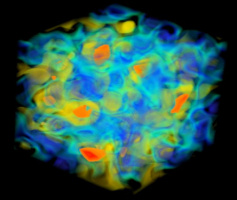
The theoretical description of matter in extreme conditions of temperature and density is one of the most advanced research field in physics. Under such conditions quantum and relativistic effects become phenomenologically relevant and many of the familiar concepts of thermodynamics and statistical mechanics must be revised. Major applications include nuclear collisions at very high energy, the Quark-Gluon Plasma, the astrophysical plasmas, cosmology and all phenomena where matter achieves local thermodynamic equilibrium in a full relativistic regime. The main tools include quantum field theory, quantum and relativistic statistical mechanics, general relativity and group theory; intriguing connections have arisen with the holographic methods (see Holography).
For more information on current research work, people and available theses:
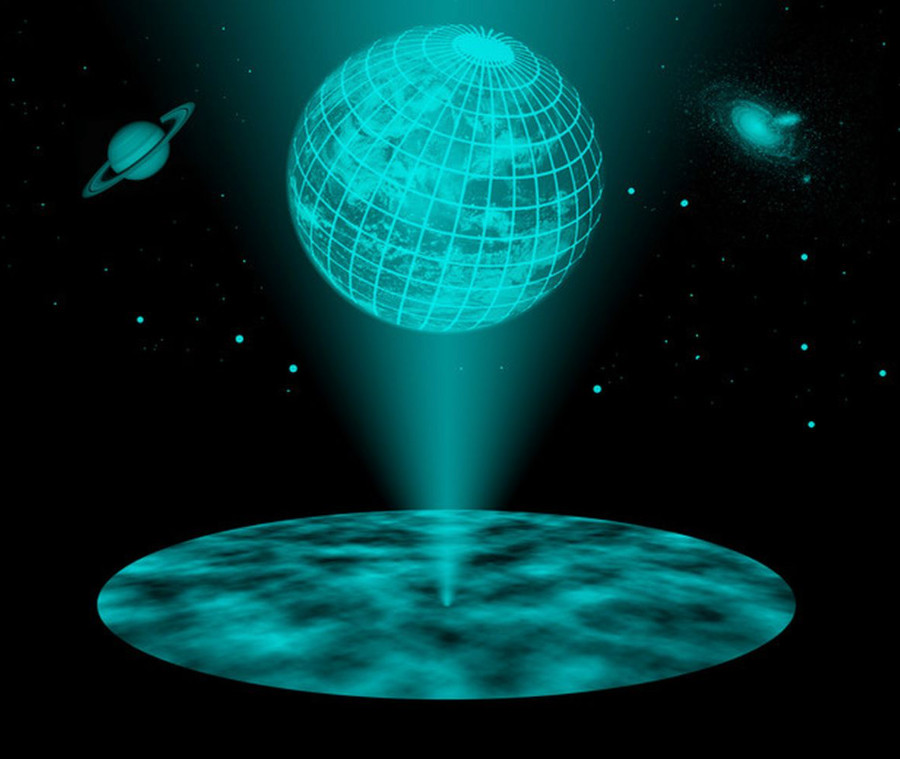
Gauge/gravity duality, or holography, is a map between ordinary quantum field theories, describing elementary particle and condensed matter systems, and higher dimensional quantum gravity theories. It finds precise realization within string theory, and has profound implications for both gauge theories and gravity.
Crucially, holography provides a unique framework to try and understand gravity as an emergent phenomenon resulting from the collective behavior of a large number of degrees of freedom. In this effort, information theory recently established as a powerful tool to organize our thinking. It exposed deep connections between geometry and entanglement, leading to a new understanding of black holes, entanglement measures, quantum chaos and the information paradox. At the same time, holography also allows to expose the underlying structure of strongly coupled systems, where interactions are so intense that the traditional perturbative paradigm based on weakly interacting degrees of freedom does not apply. Famous examples of such ubiquitous systems range from the fundamental theory of quarks and gluons - Quantum Chromo-Dynamics (QCD) - to quantum critical systems, high-temperature superconductors, strange metals.
Within the theory group, our team is active along three main directions:
1) Exploring entanglement measures and quantum information constraints within holography to shape a new understanding of black holes and quantum gravity.
2) Applying holography to access strongly coupled real-time dynamics, e.g., of hadronic matter and phase transitions in the early universe.
3) Developing and exploiting new localization and integrability methods to understand exact dynamics of (supersymmetric) gauge theories.
More information at: Florence String Theory Group):
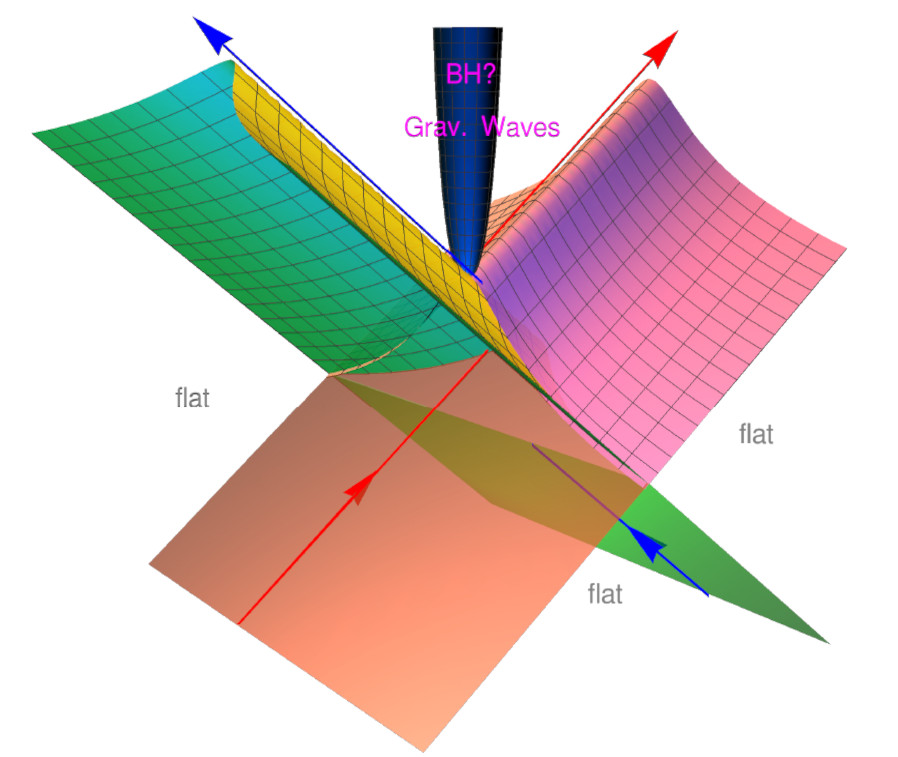
In this research area we study, at quantum level, the gravitational interaction of particles scattering at very high energies (beyond Planck's energy). This study is pursued by means of effective quantum field theories, which reduces to Einstein General Relativity in the
classical limit.
The general purpose is to better understand the behavior of gravity in extreme situations, where a quantum treatment is needed, but at the same time one expects macroscopical black-hole formation and evolution that, to some extent, can be described in classical terms.
In particular, in transplanckian scattering we study gravitational radiation production and its features (polarization, spectrum, ...), as well as two body dynamics (deflection angles, critical impact parameters,...).
This activity, from a fundamental point of view, aims at a deeper understanding of basic aspects of gravity, such as creation and evaporation of black holes, and the possible solution of the information paradox. From a more practical point of view, such results can be compared with corresponding calculations in gravitational wave phenomenology and may be relevant in calculations for two-body astrophysical processes
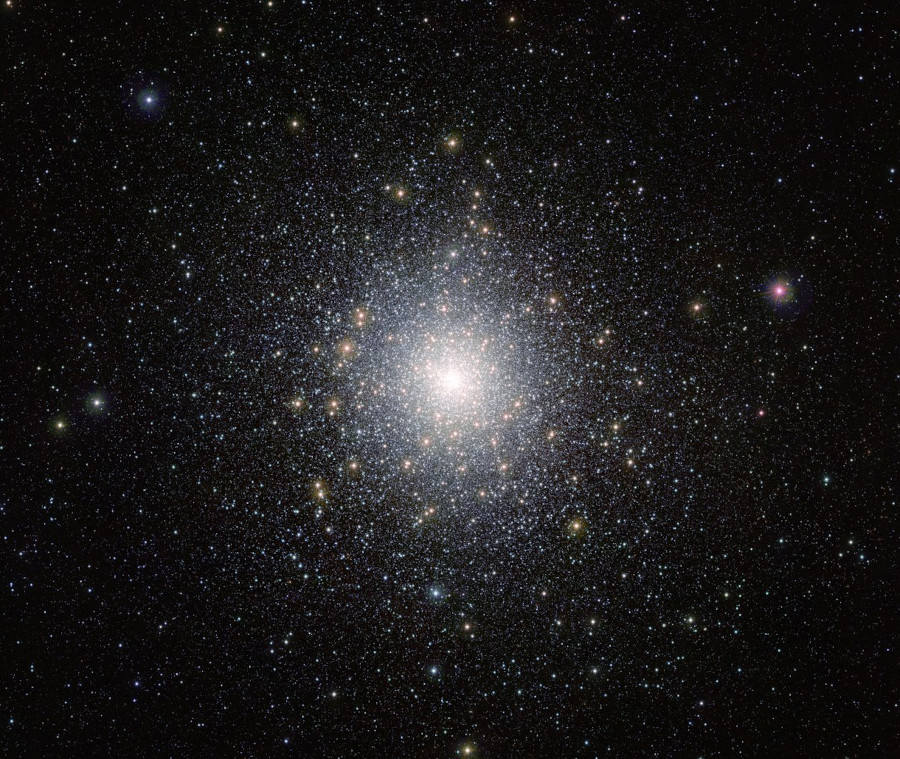
Systems with long-range interactions are ubiquitous in Nature. Self-gravitating systems are the paradigmatic example, but also unscreened electrostatic interactions in plasmas as well as dipolar forces in condensed matter or effective, electromagnetic field-mediated interactions between cold atoms in optical cavities are examples of long-range forces.
Additivity breaks down for such systems, yielding peculiar equilibrium properties as the inequivalence of statistical ensembles or negative specific heats. Yet, a consistent thermodynamic description is possible, although it is peculiar too: temperature, pressure and chemical potential can be simultaneously chosen as independent variables. In statistical mechanics, the latter corresponds to the completely open, or unconstrained, ensemble.
The most striking feature of these systems is that the relaxation time to thermal equilibrium diverges with the number of particles, so that a large system remains out of equilibrium forever, and typically relaxes towards quasi-stationary, non-thermal states. Characterizing such states as well as the collisionless relaxation process would be crucial to understand, e.g., global properties of stellar systems or galaxies as well as many aspects of their evolution. An effective evolution equation for a coarse-grained distribution function has been very recently obtained, which may prove a very useful tool to understand the dynamics of these systems. Research is ongoing on basic theoretical issues and toy models as well as on applications to real systems, ranging from stellar systems (star clusters and galaxies) to astrophysical plasmas (e.g., the solar corona) to condensed matter systems (cold atoms in optical cavities).
Image credits: ESO/M.-R. Cioni/VISTA Magellanic Cloud survey
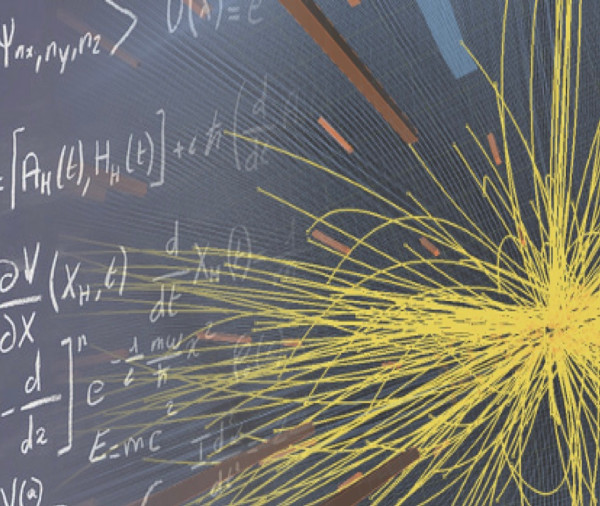
The Standard Model of particle Physics is arguably the most successful theory to date describing all we know about elementary particles and their interactions. Within its framework a wide range of phenomena can be described with impressive accuracy, hardly matched in other areas of Physics. The recent discovery of the Higgs boson at the LHC, completing the set of particles predicted long ago by the Standard Model, has been the latest big triumph.
Despite these successes the Standard Model is known to be incomplete. Several theoretical and experimental reasons (eg. the lack of a description of neutrino masses, of a dark matter candidate, and, ultimately, of a fundamental description of gravity) strongly suggest that new physics must exist.
Collider experiments, and in particular the CERN LHC, are one of our best opportunities to thoroughly test the Standard Model predictions and look for signals of new phenomena. The Higgs boson itself could represent a portal for the exploration of new physics due to its connection with deep structural properties of the Standard Model dynamics, the naturalness problem, which hint to the presence of new dynamics at the TeV energy scale.
Our group is broadly interested in the study of many aspects of Physics beyond the Standard Model, employing both analytic and numerical approaches. The main present research lines are:
- Higgs Physics: model building beyond the Standard Model
- Collider Physics: experimental tests of new physics, machine learning approaches for optimized measurements
- Flavor Physics beyond the Standard Model
- Dark Matter: models (WIMPS and axions) and experiments
- Cosmology: Phase transitions in the early universe and inflation
Webpage of the group:
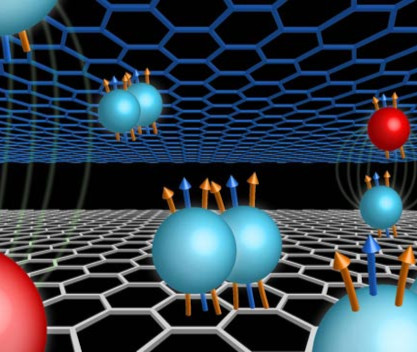
Quantum Field Theory is the main language of theoretical physics since it is able to describe many body systems with creation and annihilation of quanta, in accordance with special relativity. The fundamental interactions among elementary particles are described by quantum field theories.
Research in Statistical Field Theory deals with the applications of this technique beyond the realm of high-energy physics, in system whose effective quanta, or quasi-particles, may be massless and relativistic, even at low
energies. This domain is nowadays extremely rich and innovative, because there are many physical systems and experiments where deep quantum phenomena take place: transmutation and fractionalization of degrees of freedom, Bose-Einstein condensation and phase transitions, Aharonov-Bohm topological phases and topological degrees of freedom. Among the systems described, there are quantum devices and quantum computers, cold atomic gases, quantum spin chains, topological phases of matter and quantum systems out of statistical
equilibrium.
Powerful non-perturbative methods are employed, such as those of conformal invariant theories and exactly solvable statistical models, as well as advanced numerical methods. Altogether, Statistical Field Theory is an interdisciplinary domain bridging particle physics, condensed matter physics and mathematical physics.
The main research lines developed in Florence are:
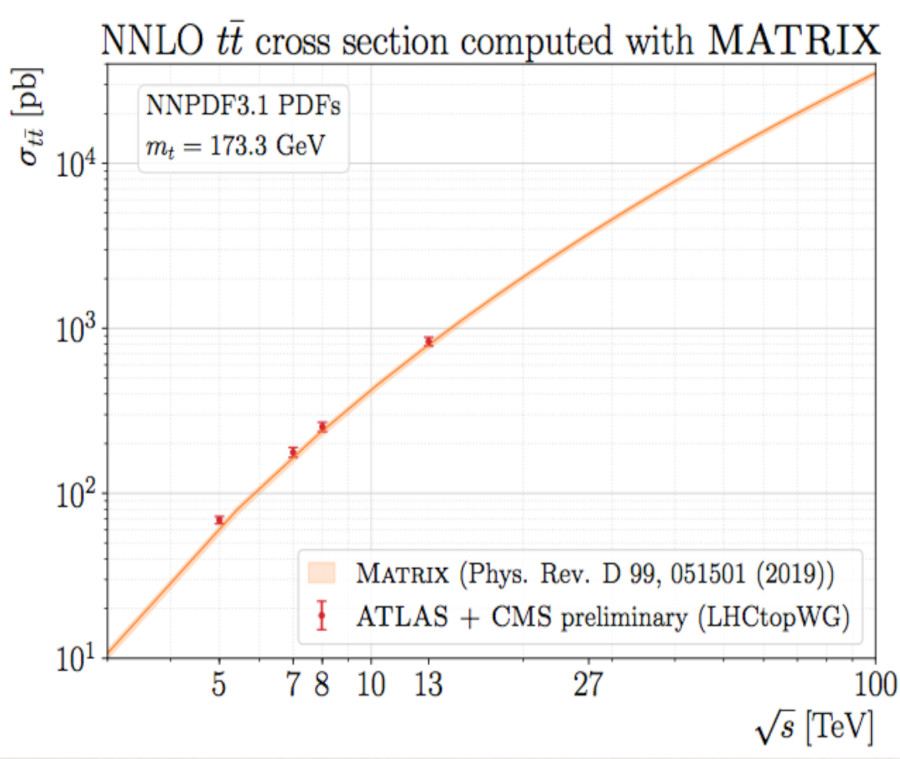
The research activity of the group aims at developing theoretical aspects and phenomenological studies of the known fundamental interactions of elementary particles.
In the context of the Standard Model of particle physics, a large part of the activity is devoted to sharpen and increase the accuracy of the theoretical predictions for the physics program at the energies of present and future particle accelerators.
We devise and develop theoretical methods for the computation of perturbative radiative corrections due to electroweak and QCD interactions. The methods, which regard both fixed-order (specifically, NLO and NNLO) and resummed perturbative calculations, are applied to obtain high-precision predictions and to perform phenomenological studies for hard-scattering processes in high-energy particle collisions. These processes include, for instance, the production of vector and Higgs bosons, heavy quarks and jets at LHC energies.
We also study the infrared (soft and collinear) behavior of QCD scattering amplitudes at higher perturbative orders (starting from N3LO). This study aims at increasing the accuracy of perturbative QCD predictions and, more generally, at investigating fundamental aspects of perturbative gauge field theories. One of these aspects regards the interplay and factorization of short-distance and long-distance physics in multiscale processes.
Additional information can be found in the item "QCD and Particle Physics Phenomenology at High Energies" at http://theory.fi.infn.it/index/pheno.html
In figure: top-quark pair production in proton--proton collisions at different energies: NNLO QCD predictions for the total cross section and comparison with LHC data from ATLAS and CMS.
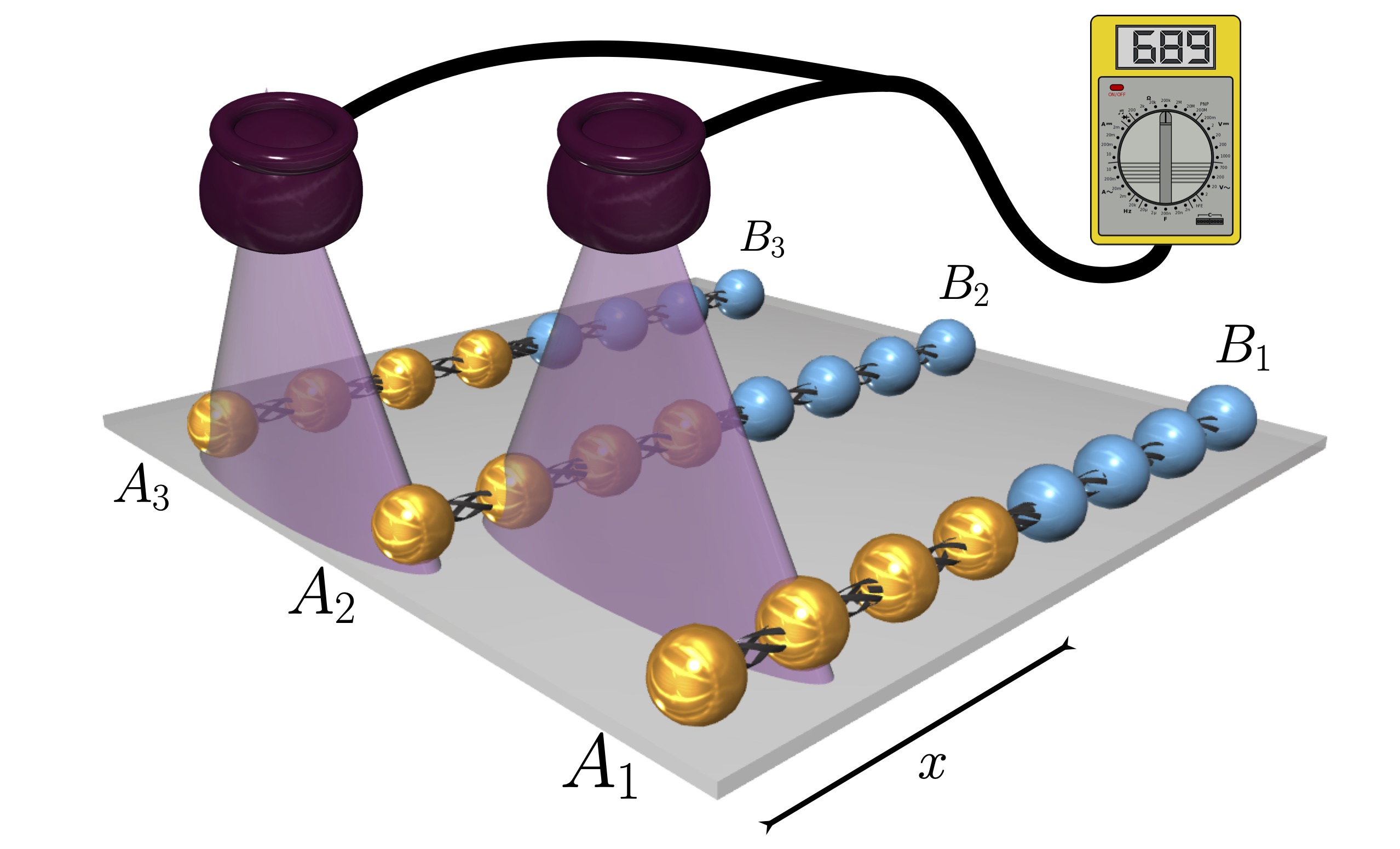
Quantum correlations, and among them entanglement, play a pivotal role both for the collective behavior of quantum many-body systems and for the effective speed-up of quantum algorithms. Moreover, a careful investigation of the dynamical behavior of quantum systems and their surrounding environment is not only essential for applications, going from thermodynamics to quantum computing, but also for shedding new light on fundamental problems in physics, such as the connection between the microscopic and macroscopic worlds.
Our team is active along different directions:
- Dynamics of low-dimensional models for quantum-state and entanglement transfer.
- Exactly solvable fermionic and bosonic models for benchmarking quantum computing devices.
- Quantum algorithms and quantum simulation methods, specifically designed for current noisy intermediate-scale quantum processors.
- Hybrid quantum-classical procedures for entanglement generation or problem solving.
- Quantum many-body systems near quantum-critical or "entanglement transition" points, and their possible use for entanglement protection.
- Simulation methods to study non-equilibrium quantum effects with superconducting transmon devices, directly using available hardware to estimate low-energy excited states of quantum many-body systems.
- Theoretical complexity of quantum machine learning and quantum computation.
- Investigation of the interplay between quantum information and thermodynamics: quantum engines and quantum sensors.
- Fundamentals of quantum mechanics and connection with general relativity: quantum-classical crossover by generalized coherent states, quantum measurements, definition of time in quantum and classical mechanics; black-holes as macroscopic quantum systems.
Last update
06.06.2023
